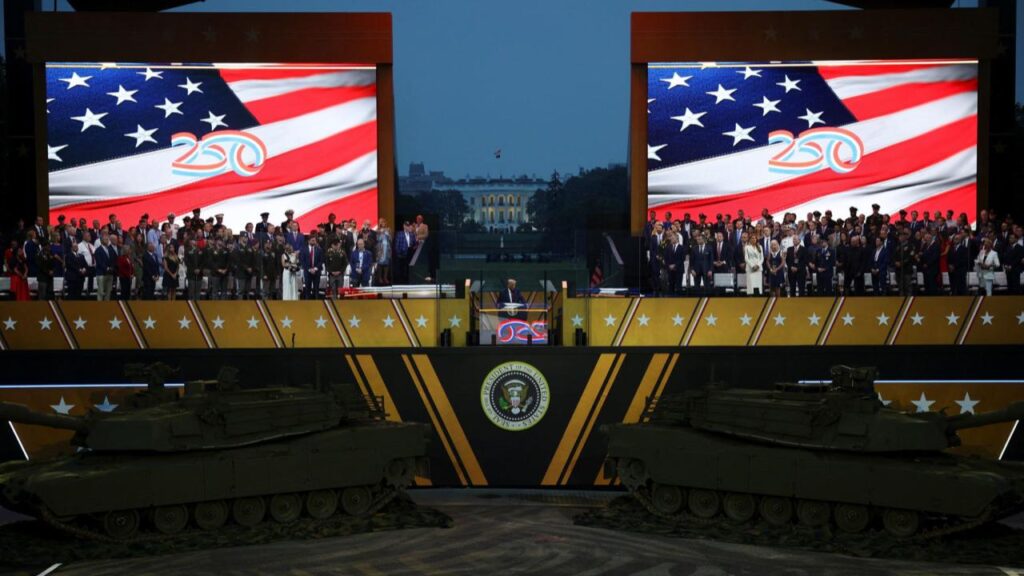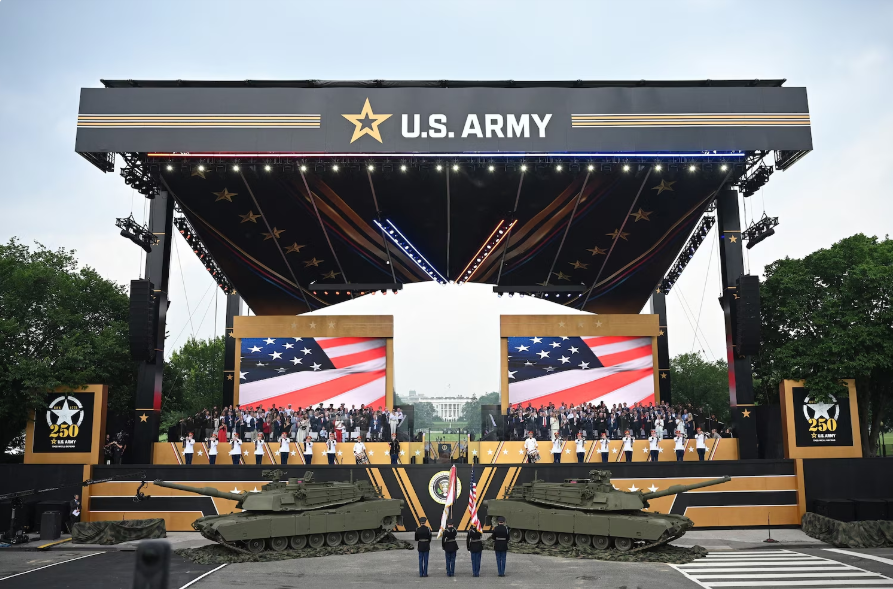The 250th Army Parade rolled through Washington’s streets on June 14, marking a historic military milestone—and President Trump’s 79th birthday. Inside, this article uncovers the spectacle, the strategy, and the stark divisions it exposed.

The 250th Army Parade That Shook the Capital
| Takeaway | Stat |
|---|---|
| Scale of the event | Featured ~6,600–7,000 troops, 150+ vehicles, and 50+ aircraft |
| Cost | Estimated between $25 million–$45 million |
| Protests | “No Kings” demonstrations in over 2,000 cities |
This 250th Army Parade was more than tanks and flyovers—it was an image of national self-definition, chiseled in steel and spectacle. For supporters, it was a salute to service; for critics, a warning sign of growing militarism and political theater. As debates continue, what’s clear is that the parade left an unmistakable mark on American memory.
The Grand Spectacle: Tanks, Troops & Flyovers
At the center of June 14’s festivities was a commanding military display featuring 28 M1–A1 Abrams tanks, Bradley Fighting Vehicles, Strykers, Paladin artillery—and even Sherman tanks and a B‑25 bomber. Soldiers donned uniforms representing every era of the Army, while paratroopers from the Golden Knights parachuted into view. Above, Apache helicopters and historic C-47 and P‑41 flyovers echoed across the skyline.
The parade route ran along Constitution Avenue and the National Mall, with steel plates shielding pavement from damage. Army engineers assured infrastructure would hold—trucks, new track pads, and reinforced turns aimed to keep the city safe.
Trump Takes Center Stage
President Trump—celebrating both the Army’s 250th and his birthday—observed from a secure stand. He saluted troops, watched a traditional 21-gun salute at Arlington, and even presided over an enlistment ceremony for 250 new soldiers. His remarks praised the military’s “fighting spirit,” insisted that “American soldiers never quit,” and framed the celebration as overdue recognition akin to Bastille Day parades abroad.
A Nation Divided
While Washington saw crowds gathering with flags, music, and “USA!” chants, the day wasn’t without controversy. Across the country, millions rallied under the “No Kings” banner—one of the largest national political protests in recent memory. Demonstrators in New York, Los Angeles, Philadelphia, Chicago, and even remote Maine voices voiced fears of authoritarianism.

Tensions occasionally flared—tear gas was used in L.A., and the tragic assassination of Minnesota Representative Melissa Hortman and her husband stoked national anxiety.
Logistics Behind The Curtain
Deploying this spectacle required months of military coordination. Equipment and troops were shipped from Fort Cavazos, Texas, arriving by rail in late May. Troops stayed between June 11–15, lodging in federal facilities downtown. The budget? Rumored between $25 million–$45 million, factoring in infrastructure, transport, personnel, and aerial assets.
Why Now—and Why Trump?
The Army’s 250th anniversary was long in the making. But the decision to elevate it into a full-scale, Trump-fronted parade came late in the planning stages. Sources within the Pentagon and White House say the parade concept—mirroring European displays—was reignited when Trump expressed interest, tying the event to his birthday.
Critics—especially Democrats—decried the parade as a misuse of tax dollars and a politicization of the military. Bills were introduced to prohibit such displays and public funds being used for “personal glorification.”
What This Meant
I’ve covered similar military events—like Bastille Day in Paris—and, frankly, this was maybe the most politically charged parade I’ve seen. On one hand, it honored centuries of American military sacrifice—on the other, it served as a stark reminder: in today’s America, every patriotic pageant is also a political statement.






